RECOIL OFFGRID Gear Choosing the Right Outdoor Clothing
On any given Saturday, hiking trails are brimming with the seasonal and accomplished hiker or the friend who was dragged along for “fresh air” and “exercise.” The wilderness doesn’t discriminate between the experienced outdoorsman and the weekend warrior on doctor’s orders to reduce blood pressure; it’ll be just as rewarding and unforgiving to both. Sadly, we hear more about the unforgiving side, as tales of lost hikers splash across headlines. Their stories either end in miracles or tragedy as they’re exposed to nature’s harshest realities.
Surviving heat exposure in the elements boils down to one thing: preparation. Yes, that pack you spent hundreds (if not thousands) of dollars filling with survival blankets, first-aid kits, and tools is essential. However, preparation starts a little closer to the body; it starts with your clothing. The clothes you choose on every outing, in every season, could mean the difference between life and death. Yes, they’re that important.
Does this sound familiar? “It’s just a short hike, I don’t need my full pack.” Or, “I’m going with a group of friends, it’s fine if just one of us carries supplies.” “This is only exercise; tennis shoes are fine.” “Nothing bad will happen.” Then, the weather turns, your friend rolls his ankle, you can’t seem to reach that overlook you knew was just around the corner, and so you’re lost, thirsty, cold, wet, and that two-hour hike has now turned into a 12-hour ordeal before someone reports you missing. Suddenly, those leggings and tennis shoes weren’t such a great idea. Those wet shorts or jeans your friend is wearing are making things worse. Dress wisely, because your apparel could distinguish between an adventure you talk about later with friends over a beer and a tragic statistic that brings out all the Monday-morning quarterback survival specialists.
So, what does that mean? Survivalists will tell you to wear moisture-wicking, quick-drying, breathable, abrasion-resistant, UPF-rated clothing. Got it. But besides looking tacticool, what’s the point of wearing this high-speed, low-drag clothing? What do these clothes really do for you? Let’s break down some threats and see how appropriate clothing can aid in survival.
Sunburns in a survival situation can be a serious problem. Not only can the pain hinder your ability to perform simple tasks, but, depending on the severity, blistered skin can lead to deadly infections. If you think you’re safe in the winter, think again. Ultraviolet radiation can bounce off the snow, increasing sun exposure. Additionally, the thinner atmosphere at higher altitudes increases UV intensity. Wearing long-sleeved shirts and pants with an ultraviolet protection fabric, or UPF, rating can replace the sunscreen you may or may not remember to pack or reapply. Look for long-sleeved shirts with a collar you can pop up to protect your neck.
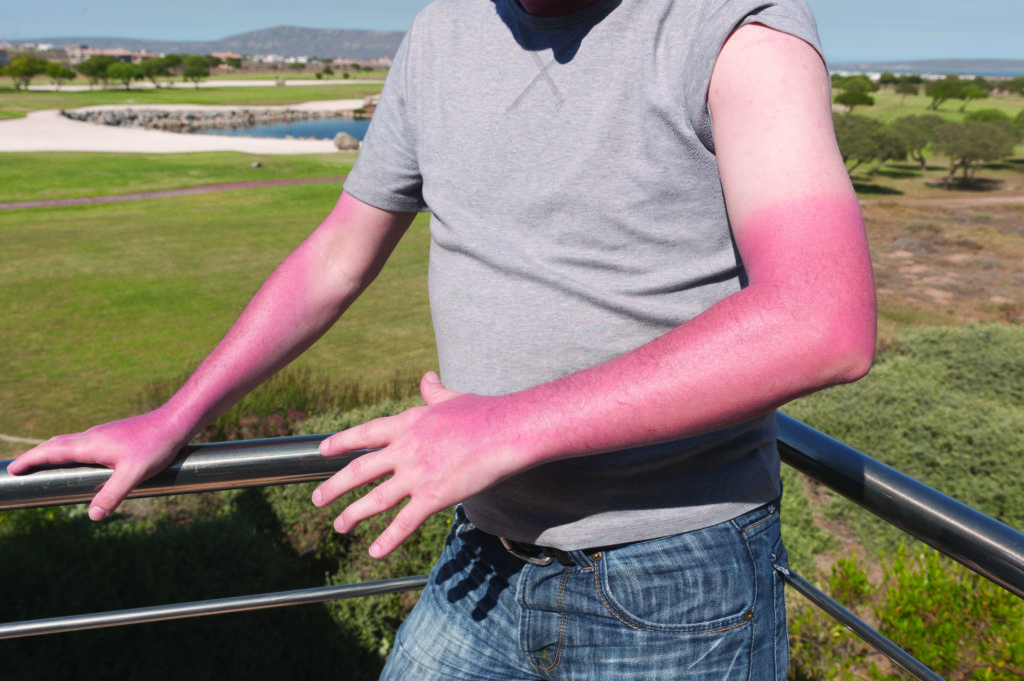
A bad sunburn can make even the simplest tasks excruciating. Unlike sunscreen UPF-rated clothing won't wash off...
Numerous companies offer shirts that work well in all seasons. For those who can’t imagine wearing long-sleeved shirts in hot months, just think how hot you get when your skin is directly exposed to sun during a summer day as opposed to wearing your cover-up around the pool. While it may sound counterintuitive, protecting your skin from sun exposure will keep you cooler. Look for breathable fabrics that don’t trap perspiration between your skin and clothing. Additionally, consider purchasing hats with fold-down fabric to protect your neck and ears.
Many people assume hypothermia is only a winter concern. Hypothermia occurs when your core body temperature drops below 95 degrees. Thus, if your body is exposed to colder temperatures for an extended period in any season, you run the risk of hypothermia. Getting wet exacerbates this problem, since your skin cools as the water evaporates. Clothing is designed to trap warm air near your skin. You may have heard of the old adage: cotton kills. Well, more accurately, wet cotton kills. Otherwise, we wouldn’t love those warm flannel shirts in the winter. Survival experts warn you against cotton because of its fantastic ability to absorb and hold onto water. Think of your cotton towel that’s so good at drying you off in the morning, but still wet at midday.
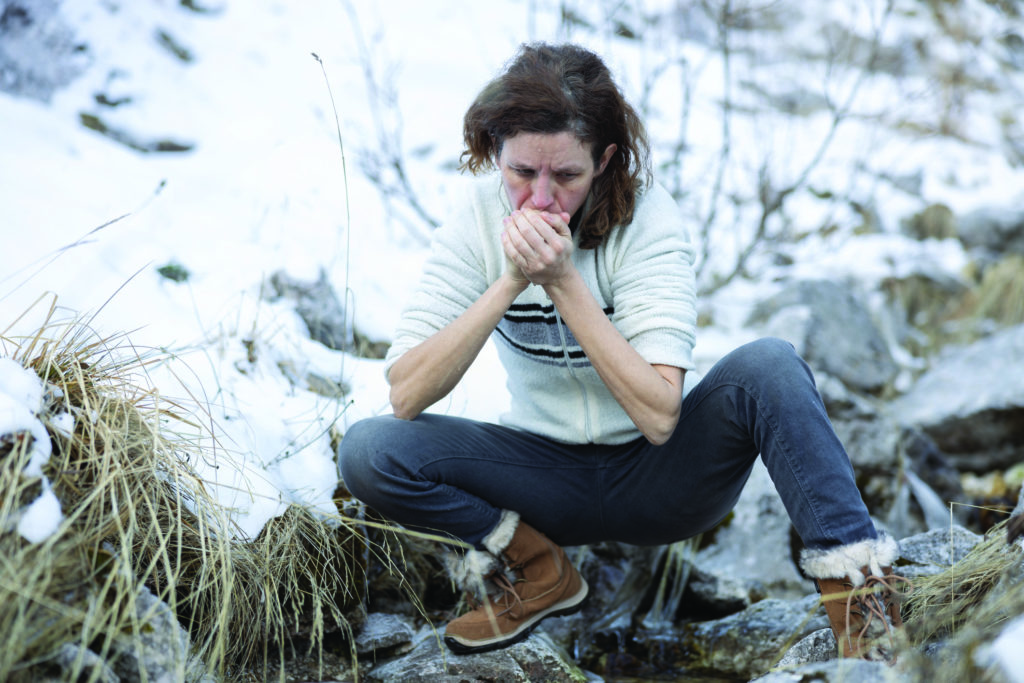
Hypothermia isn't only a concern in cold weather. A moisture-wicking base layer will keep your skin dry, reducing...
When saturated, cotton loses its insulation properties and pulls heat away from your body. Wet clothing — whether from a surprise rainstorm, misstep crossing the stream, or sweat — can lower body temperature and lead you down the path to hypothermia. The exception to this is wool, which does insulate when wet. However, it also gets very heavy when saturated. You must decide if your morale can handle walking around in wet, heavy — yet warm — clothing. Otherwise, look for fabric that’s quick drying, such as nylon and polyester, or similar synthetics. These performance fabrics “wick” moisture away from the skin. Wicking works by pulling moisture from the body to the surface of the fabric. It not only keeps your skin dry, but also preserves the trapped air that keeps you warm. It works especially well within a system of layers, as the moisture continues to wick toward the outermost clothing surface, retaining your body heat.
Avoid material made from cellulose, which provides no insulation when wet and absorbs water even faster than cotton. These include rayon, viscose, Tencel, and lyocell.
This one is a tad more obvious. Long-sleeved shirts and pants provide a barrier between you and biting bugs or poisonous plants. Depending on your location, insects can carry Zika virus, Lyme disease, Rocky Mountain Spotted Fever, malaria, Dengue fever, or the West Nile virus, among others. On longer hikes, or anything that spans days or weeks, clothing will be a better choice for protection against insects. Consider insect repellent an addition, not a full solution.
What isn’t obvious is that, depending on the weight of the fabric, its weave, and how tight it’s woven, mosquitos can still bite you through your clothes. Many companies offer clothing treated with permethrin to protect against mosquito or other insect bites. Permethrin works as an insecticide rather than a repellent, killing or incapacitating insects once they land on you. Anecdotal evidence and consumer reports have shown permethrin to be an effective preventative measure. Repellents, such as DEET, are highly recommended. Whether or not you use permethrin-treated clothing, you should still use a repellent on exposed skin.
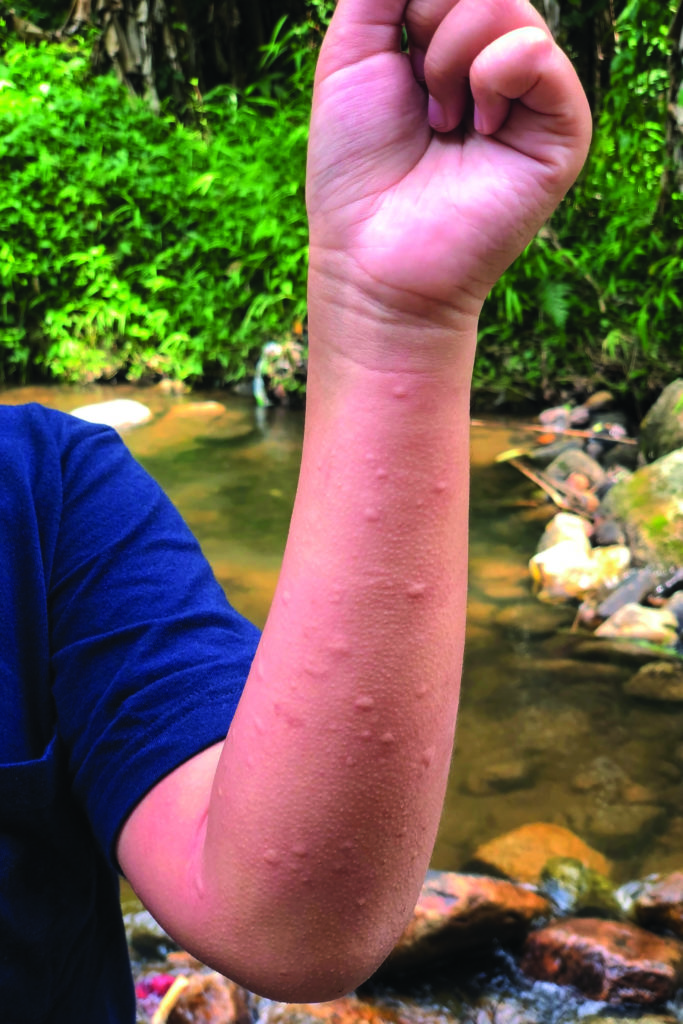
Heat Rash, insect bites, and allergic reactions all contribute not only to discomfort, but complicate any survival...
Poison ivy, poison oak, and poison sumac could cause more than just an itchy, uncomfortable week in a survival situation; this rash could greatly hinder your effectiveness in the wilderness. According to the American Skin Association, 85 percent of Americans are allergic to urushiol, the oil that causes weeping blisters and itchy skin. Depending on the location of affected areas, urushiol can be an annoyance or deadly; anytime it affects your airway, it can cause death.
The most common danger, though, is infection from scratching the rash. While winter may kill those leaves of three we’re trained to avoid, the vines and branches remain through the frigid weather as potent pieces of poisonous displeasure. The good news? It's contact dermatitis, meaning your skin needs to come into contact with the oil for the allergic reaction to take place. The bad news? You can pick it up from indirect contact — your dog, your pack, etc. In fact, urushiol oil has been known to stay on clothing for up to five years. But don’t fret, one good washing will remove the oil. The point, though, is to wear long clothing so it doesn’t contact your skin in the first place.
In a survival situation, as you’re trampling through the woods or making your way through the desert, a brush of a branch or rub against a rock can cut through bare skin leading to more than cuss-word-laden frustration. A simple scrape in the wilderness can become a deadly infection if left untreated as bacteria riding on flora and fauna particles enter your body. Soon, the skin around that little scratch is swelling, getting redder, and starting to ooze, turning an overnight camping trip into a medical emergency.
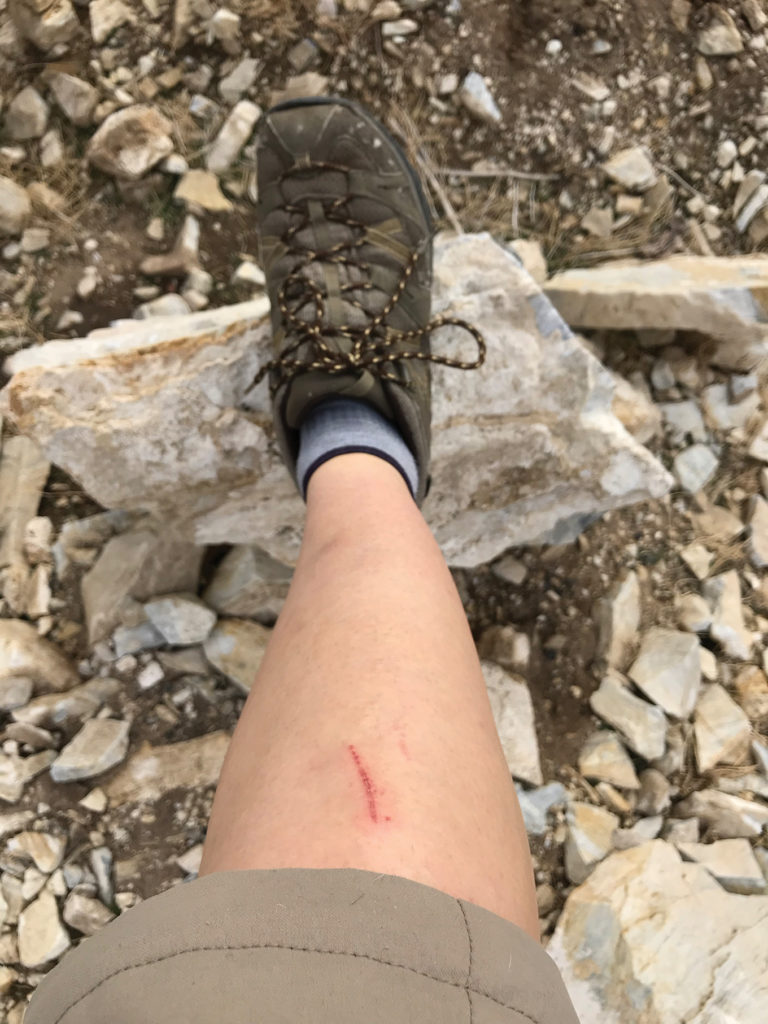
Scratches and scrapes may seem like no big deal at first, but without proper care these minor injuries can lead to...
Wearing abrasion-resistant, durable clothing helps prevent these scrapes and scratches. Again, look for synthetic fabric with strong fibers such as nylon and polyester. Another keyword to lock onto is “ripstop.” Ripstop clothing utilizes synthetic fibers woven in a unique way to resist tearing and ripping. The technical innovations in today’s fabrics mean durable clothes don’t necessarily equate to heavy clothes. Companies offer ripstop and abrasion-resistant long-sleeved shirts and pants in light or heavier weight, depending on your preference.
It’d be remiss not to mention proper footwear on this list, and not only because absorbent tennis shoes are making a comeback on the trails. The benefits of proper ankle protection while traversing a countryside are four-fold: 1) ankle support prevents sprains, 2) no one likes rocks in their shoes when they’re walking, 3) wet socks and shoes lead to blisters and poor morale, and 4) snakes. Snakebites make for a bad day. While it’s not impossible to roll an ankle in boots, your ligaments have a much better chance of overstretching without proper support. In a survival situation, if you can no longer walk, you’re reliant on others to find or move you.
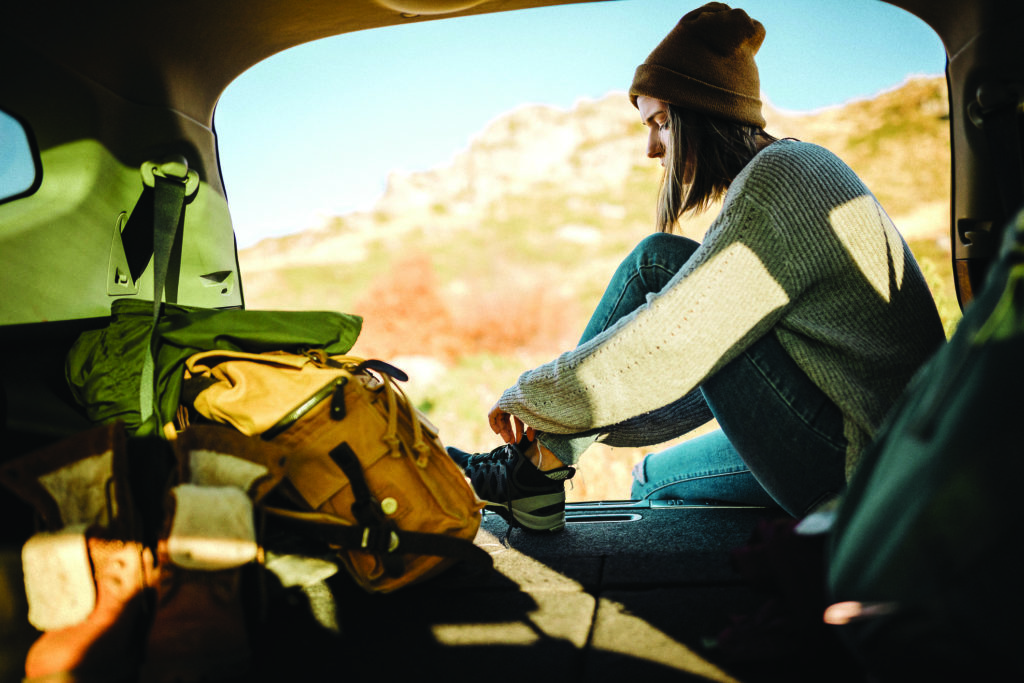
Low-cut shoes have a hard time repelling water, gravel, thorns, and other intrusive items. Over-the-ankle boots offer...
Additionally, low-ankle footwear tends to gather its local environment — whether dirt or rocks — in its heel. Stopping to constantly empty your shoes takes precious time as the sun is setting and the temperature drops. Even worse, when your tennis shoes get wet, your socks get wet. The heat, moisture, and friction combine to make some awful blisters, further limiting your mobility. Lastly, snakes want to avoid people as much as you want to avoid them. However, since you’re walking through their environment, it’s possible to disturb and surprise them, causing them to strike. Most bites occur below the knee. (Unless you’re in some countries in Africa where the black mamba can rise as high as 3 feet to strike. In which case, I hope you had a lovely life.) Do research on the prevalence of poisonous snakes in your area to determine if your over-the-ankle boots are sufficient, or if you should invest in snake-proof boots or gaiters.
You have the food, you have the water, you have all the cool gear in your pack required for your next hike or trip. So why stop there? Set yourself up for success by ensuring your clothes are held to the same survival standard as the rest of your tacticool playthings. There’s a reason outdoor recreation stores are stocked with special clothing dedicated to the outdoor enthusiast. Those who spend a lot of time outside learn quickly what aids and what hinders their recreational enjoyment. Beyond fun, though, proper clothing choice is essential for those “just in case” moments.
Now, this clothing isn’t a replacement for wilderness education or proper training; it also doesn’t contain magical powers to combat negligence or stupidity. You still need to follow the rule of three in every survival situation (see sidebar). Proper clothing does, however, increase your chances of surviving against the elements until help arrives or you finally find that trail home. Look for UPF-rated, nylon-blend, moisture-wicking, quick-drying, breathable long-sleeved shirts and pants, as well as proper footwear for your environment. Otherwise, you may end up asking yourself on Monday whether you would’ve survived if you had protection against the sun, or the cold, or the rain, and what would’ve happened if you hadn’t worn those leggings and tennis shoes.
 STAY SAFE: Download a Free copy of the OFFGRID Outbreak Issue
STAY SAFE: Download a Free copy of the OFFGRID Outbreak Issue
No Comments